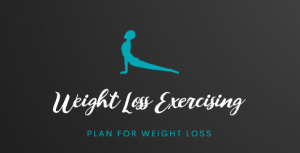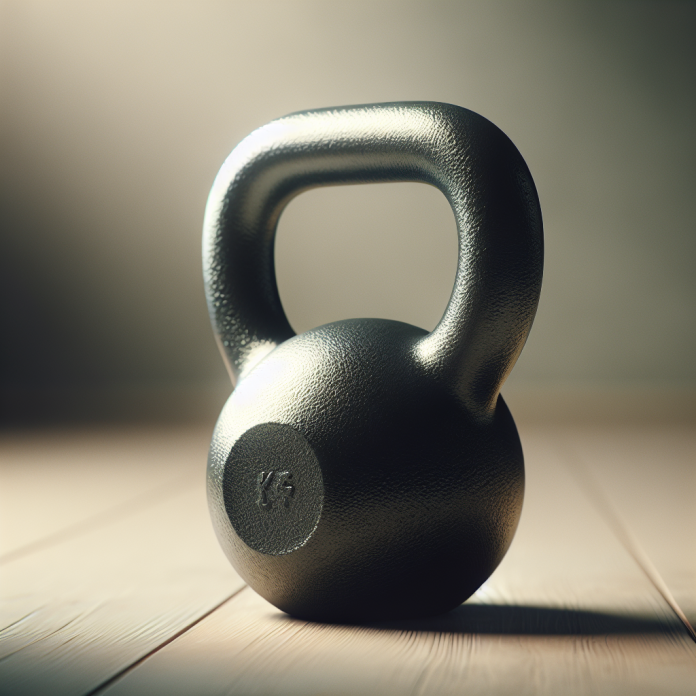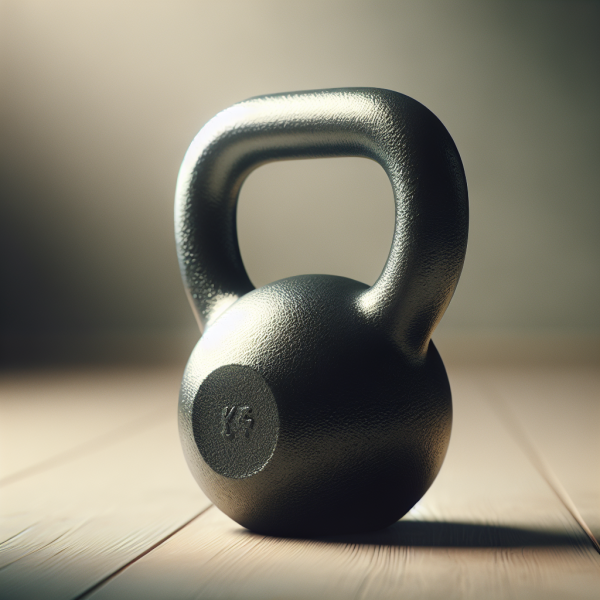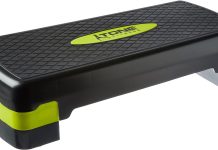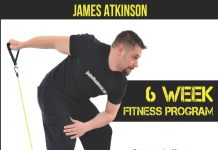Are you looking to kickstart your fitness journey with a powerful, yet beginner-friendly workout? Look no further than the ultimate kettlebell workout for beginners. With its versatile movements and compact design, the kettlebell is the perfect tool to help you build strength, burn calories, and tone your muscles all at once. Whether you’re a seasoned athlete or just starting out, this comprehensive workout guide will guide you through a series of exercises that target your entire body, ensuring a well-rounded and efficient workout every time. Say goodbye to boring workouts and hello to a fun and effective training routine with kettlebells!
Review contents
Benefits of Kettlebell Workouts
Kettlebell workouts offer a multitude of benefits for individuals of all fitness levels. Whether you’re just starting your fitness journey or looking to mix up your current routine, incorporating kettlebell exercises can provide a range of physical and mental advantages. From strengthening and toning muscles to improving cardiovascular fitness, and enhancing core stability and balance, kettlebell workouts can truly transform your fitness routine.
Strengthens and Tones Muscles
One of the primary benefits of kettlebell workouts is their ability to strengthen and tone muscles throughout the entire body. The unique shape and design of kettlebells allow for a wider range of motion compared to traditional dumbbells or barbells, engaging multiple muscle groups simultaneously. Movements such as kettlebell swings, snatches, and cleans activate the muscles in the legs, hips, back, shoulders, and arms, providing a comprehensive full-body workout. As you progress and increase the weight of the kettlebell, you’ll notice greater muscle definition and increased strength.
Improves Cardiovascular Fitness
In addition to strengthening muscles, kettlebell workouts are highly effective for improving cardiovascular fitness. The dynamic nature of kettlebell exercises requires constant movement and exertion, elevating your heart rate and increasing endurance. Movements like kettlebell swings and clean and press not only engage the muscles but also get your heart pumping, resulting in improved cardiovascular health. Regular kettlebell workouts can enhance your stamina, allowing you to perform daily activities with greater ease and reducing the risk of cardiovascular diseases.
Enhances Core Stability and Balance
Another significant advantage of kettlebell workouts is their impact on core stability and balance. Kettlebell exercises often involve explosive movements that require core engagement to maintain proper form and stability. Movements like goblet squats and Turkish get-ups target the core muscles, strengthening the abdominals, obliques, and lower back. Additionally, the uneven weight distribution of a kettlebell challenges your balance and proprioception, improving your overall stability. By incorporating kettlebell exercises into your routine, you’ll develop a strong and stable core, leading to better posture and reduced risk of injuries.
Choosing the Right Kettlebell
When starting with kettlebell workouts, choosing the right kettlebell plays a vital role in ensuring safety and maximizing the effectiveness of your workouts. Consider the following factors when selecting a kettlebell:
Determining the Ideal Weight
The weight of the kettlebell is crucial for creating the appropriate challenge during your workouts. It’s essential to find a weight that is challenging without compromising your form and technique. As a beginner, it is recommended to start with a lighter kettlebell to focus on proper form and gradually increase the weight as your strength improves. Women often begin with 8-12 kg (18-26 lbs), while men typically start with 12-16 kg (26-35 lbs) kettlebells. Consulting with a fitness professional can help you determine the ideal weight based on your current strength and fitness level.
Choosing the Right Handle Grip
The handle grip of a kettlebell significantly impacts your ability to perform exercises comfortably and safely. Look for a kettlebell with a wide and ergonomic handle, allowing for a secure grip and smooth transitions between exercises. A comfortable grip reduces the risk of injuries and ensures proper form throughout your workouts. Additionally, consider the texture of the handle. Smooth handles may become slippery during intense workouts, while textured or rubber-coated handles provide better grip and prevent any accidents.
Considering the Material
Kettlebells are commonly made of cast iron or steel, each with its advantages. Cast iron kettlebells are often more affordable and have a traditional appearance, making them a popular choice for beginners. However, they are bulkier and may be harder on the hands during long workouts. Steel kettlebells, on the other hand, are more compact, making them easier to maneuver, especially during exercises that involve kettlebell flips or hand changes. They also tend to have a smoother finish, reducing the risk of calluses or blisters. Consider your preferences, budget, and intended use when selecting the material of your kettlebell.
Pre-Workout Preparation
Before diving into your kettlebell workout, it’s crucial to properly prepare your body to minimize the risk of injuries and maximize performance. The following pre-workout preparation steps are essential for a safe and effective workout:
Warm-up Exercises
Start your kettlebell workout with a dynamic warm-up routine to increase blood flow and loosen up the muscles. Perform exercises such as jumping jacks, high knees, or arm circles to gradually increase your heart rate and warm up the major muscle groups. Dynamic stretches, like leg swings and torso twists, can also be incorporated to improve joint mobility and flexibility. A proper warm-up session prepares your body for the upcoming workout, enhancing performance and reducing the likelihood of strains or sprains.
Proper Form and Technique
To get the most out of your kettlebell workout, it’s essential to focus on proper form and technique. Improper form not only decreases the effectiveness of the exercise but also increases the risk of injuries. Before starting your workout, familiarize yourself with the correct form for each exercise. Pay attention to your body alignment, engage your core, and maintain a neutral spine throughout the movements. If you’re unsure about proper form, consider working with a certified kettlebell instructor or watching instructional videos to ensure you’re performing the exercises accurately.
Safety Precautions
Prioritizing safety during your kettlebell workouts is essential to prevent any accidents or injuries. Ensure you have enough space around you to perform the exercises without any obstructions. Clear any equipment or objects that may pose a risk during your workout. Additionally, pay attention to the flooring – choose a non-slip surface to prevent any accidental slips or falls. It’s also crucial to listen to your body and avoid pushing beyond your limits. Start with lighter weights and gradually increase the intensity as your strength and technique improve.
Basic Kettlebell Movements
Now that you understand the benefits of kettlebell workouts and have prepared yourself for a safe session, it’s time to explore some basic kettlebell movements. These staple exercises will form the foundation of your kettlebell routine and target various muscle groups.
Goblet Squats
Goblet squats are a fundamental kettlebell exercise that primarily targets the muscles of the lower body, including the quadriceps, hamstrings, glutes, and calves. To perform a goblet squat, hold the kettlebell close to your chest, gripping the sides of the handle. With your feet positioned shoulder-width apart, descend into a squat, maintaining an upright torso and pushing your knees outwards. Lower your body until your thighs are parallel to the ground, and then drive through your heels to return to the starting position. Performing 3 sets of 10 reps of goblet squats will effectively engage your lower body muscles and build strength.
Two-Handed Swings
Two-handed swings are an explosive exercise that engage the posterior chain, including the glutes, hamstrings, and lower back. To execute a two-handed swing, stand with your feet slightly wider than shoulder-width apart, and position the kettlebell on the ground in front of you. Hinge at the hips and grasp the kettlebell with both hands. Maintain a slight bend in your knees and a neutral spine while driving your hips forward to propel the kettlebell up to shoulder height. Allow the kettlebell to swing back between your legs while maintaining control, and repeat the movement for 3 sets of 15 reps. Two-handed swings provide a great cardiovascular workout while engaging multiple muscle groups simultaneously.
Turkish Get-Ups
Turkish get-ups are a full-body exercise that challenges core strength, stability, and mobility. This complex movement works several muscle groups, including the shoulders, hips, core, and legs. Begin by lying on your back while holding the kettlebell in one hand, arm extended toward the ceiling. While keeping your eyes fixed on the kettlebell, perform a series of movements to transition from lying down to a standing position, all while maintaining control of the kettlebell above you. Reverse the movements to return to the starting position. Perform 2 sets of 5 reps on each side, gradually increasing the weight and repetitions as you become more comfortable with the exercise. Turkish get-ups require concentration and coordination, providing both a physical and mental challenge.
Sample Kettlebell Routine
Now that you’ve familiarized yourself with some basic kettlebell movements, let’s put them together in a sample kettlebell routine that you can follow as a beginner. This routine incorporates a warm-up and three key kettlebell exercises to provide a full-body workout:
Warm-up: Jumping Jacks and Arm Circles
Start your kettlebell routine with a dynamic warm-up. Perform 2 minutes of jumping jacks to elevate your heart rate and engage your whole body. Follow this with 1 minute of arm circles, both forward and backward, to loosen up your shoulders and upper body.
Exercise 1: Goblet Squats – 3 sets of 10 reps
Perform three sets of goblet squats, starting with a light to moderate kettlebell. Hold the kettlebell close to your chest, descend into a squat, and return to the starting position. Repeat this movement for 10 reps, resting for 45 seconds between sets. Goblet squats will activate your lower body muscles and build lower body strength.
Exercise 2: Two-Handed Swings – 3 sets of 15 reps
Next, move onto three sets of two-handed swings. Hinge at the hips, drive your hips forward, and propel the kettlebell up to shoulder height. Control the swing on the downward motion, and repeat for 15 reps, resting for 45 seconds between sets. Two-handed swings will provide a cardiovascular workout while engaging your glutes, hamstrings, and lower back.
Exercise 3: Turkish Get-Ups – 2 sets of 5 reps
Finish your routine with two sets of Turkish get-ups. Lie on your back with the kettlebell in one hand and perform the series of movements to transition from lying to standing. Repeat this on both sides for 5 reps per side, resting for 60 seconds between sets. Turkish get-ups challenge your core stability and coordination, providing a full-body workout.
Progression and Increasing Intensity
As you become more comfortable with your kettlebell workouts, it’s important to progress and increase the intensity to continue challenging your body and achieving results. Here are some ways to progress your kettlebell workouts:
Adding More Weight
Once you’ve mastered the movements with a specific kettlebell weight, it’s time to increase the weight to create a greater challenge. Gradually add more weight to your kettlebell as your strength and technique improve. The increased resistance will force your muscles to adapt and become stronger.
Increasing Repetitions
To further enhance muscular endurance and cardiovascular fitness, increase the number of repetitions per exercise. For example, if you were initially performing 10 reps of goblet squats, aim to increase it to 12 or 15 reps. By pushing yourself to perform more reps, you’ll gradually build up your endurance and promote muscle growth.
Introducing Complex Movements
Once you’ve mastered the basic kettlebell movements, it’s time to introduce more complex exercises into your routine. Movements like kettlebell snatches, cleans, and overhead presses require greater coordination, stability, and control. These complex movements engage multiple muscle groups simultaneously and provide a greater challenge for your body.
Common Mistakes and How to Avoid Them
While kettlebell workouts can be highly beneficial, it’s important to be aware of common mistakes and how to avoid them to ensure a safe and effective workout.
Using Incorrect Form
Improper form is one of the most common mistakes made during kettlebell workouts. It not only reduces the effectiveness of the exercise but also increases the risk of injury. Ensure you understand the correct form for each exercise and focus on maintaining proper alignment throughout the movement. Consider working with a certified kettlebell instructor or seeking professional guidance to ensure you’re performing the exercises with correct form.
Lack of Warm-up
Failing to properly warm up your body before a kettlebell workout can lead to muscle strains or other injuries. A dynamic warm-up routine increases blood flow, loosens up the muscles, and prepares the body for exercise. Take the time to perform a thorough warm-up, including exercises such as jumping jacks, arm circles, and dynamic stretches.
Overtraining and Injury Risks
Overtraining occurs when you don’t allow your body enough time to rest and recover between workouts. It places excessive stress on the muscles and can lead to injuries or plateaus in your progress. It’s important to listen to your body and prioritize rest days throughout your training week. Incorporating rest and recovery into your routine will help prevent overuse injuries and ensure your body has sufficient time to repair and grow stronger.
Recovery and Rest Day Considerations
Recovery and rest days are an essential component of any well-rounded fitness routine. Adequate recovery allows the body to repair muscle fibers, reduce inflammation, and replenish energy stores. Here are some considerations for recovery and incorporating rest days into your kettlebell training:
Importance of Proper Rest
Rest is vital for optimal recovery and overall fitness progression. Make sure to schedule rest days into your training program, allowing your body at least one or two days of complete rest per week. On rest days, prioritize activities that promote relaxation and recovery, such as stretching, yoga, or taking a leisurely walk. This downtime is crucial for your body to recharge and repair.
Post-Workout Stretching
Stretching after your kettlebell workout can aid in muscle recovery and flexibility. Focus on stretching the muscles you engaged during your workout, holding each stretch for 20-30 seconds. Incorporating a post-workout stretching routine can reduce post-exercise muscle soreness and help prevent muscle imbalances.
Incorporating Active Recovery Workouts
On rest days, consider incorporating active recovery workouts that promote blood circulation and aid in recovery. Light cardio exercises, such as walking or cycling, can help flush out toxins and reduce muscle soreness. Yoga, Pilates, or mobility exercises can also be beneficial for improving flexibility and range of motion.
Incorporating Kettlebell Workouts into Your Fitness Routine
Now that you understand the benefits, techniques, and recovery considerations for kettlebell workouts, it’s time to explore how to incorporate them into your overall fitness routine.
Finding the Right Frequency
The frequency of your kettlebell workouts will depend on your overall fitness goals, current fitness level, and recovery capacity. As a beginner, start with two to three kettlebell workouts per week, allowing at least one day of rest in between sessions. As you progress and become more comfortable with the exercises, you can gradually increase the frequency to four or five sessions a week. Always listen to your body and adjust the frequency accordingly based on how you feel.
Combining Kettlebell Workouts with Other Exercises
To create a well-rounded fitness routine, consider incorporating kettlebell workouts with other forms of exercise. Kettlebell workouts can be a standalone workout or serve as a component of a larger fitness program. For example, you can perform kettlebell exercises one day and include strength training, cardio, or flexibility training on alternate days. This variety will keep your workouts engaging and challenge your body in different ways.
Creating a Balanced Workout Plan
When creating a balanced workout plan, it’s important to consider all aspects of fitness, including strength, cardiovascular fitness, flexibility, and stability. Incorporate kettlebell workouts that target these areas while complementing them with other forms of exercise such as bodyweight exercises, running, yoga, or Pilates. A well-rounded workout plan ensures you’re challenging your body in different ways, promoting overall fitness and preventing plateaus.
Conclusion
Kettlebell workouts offer numerous benefits, including strength gains, cardiovascular fitness improvement, and enhanced core stability and balance. By choosing the right kettlebell, preparing properly, and implementing a comprehensive workout routine, you can safely and effectively incorporate kettlebell exercises into your fitness regimen. Remember to progress gradually, prioritize proper form, and allow for sufficient rest and recovery to maximize your results. With dedication and consistency, kettlebell workouts can take your fitness journey to new heights, providing a challenging and enjoyable way to achieve your health and wellness goals. Begin your kettlebell journey today and experience the transformative power of this versatile and effective tool.
